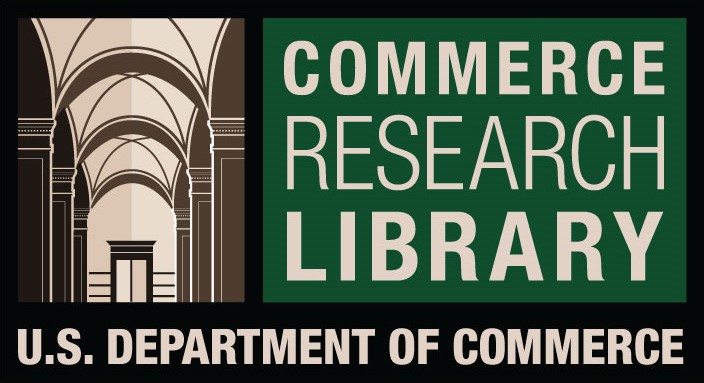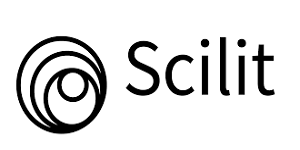A systematic review of Structural Contingency Theory and structure-environment-effectiveness relationship
DOI:
https://doi.org/10.61841/k2m6dt25Keywords:
Structural Contingency Theory, Environmental Factors, Organizational Development, OrganizationalStructure, Concept of FitAbstract
This paper aims to review structural contingency theory and the relationship between structure-environment effectiveness. This review paper is a conceptual paper based on qualitative research analysis. This review paper explained and reviewed 30 articles from the 21st century about structural contingency theory. After reviewing different papers on Structural Contingency theory, it was found that organizations' structure should be flexible in external contingencies, especially in loose, dynamic environments. The study proposes that SCT can help organizational development by fitting between the structure and multiple contingencies. The Fit between organic structure and high environmental uncertainty and the Fit between mechanical structure and low environmental uncertainty can exist simultaneously in an organization. The uncertain external environment is one of the most important contingencies in which an organization must respond. An organization's external environment as a set of factors could influence the organizational system's functioning This paper provided a guideline to companies for the practical usage of SCT and stated that SCT provides companies with an opportunity to evaluate the contingencies and source of effective structure for organizations.
Downloads
References
Abba, M., Yahaya, L., & Suleiman, N. (2018). Explored and critique of contingency theory for management
accounting research. Journal of Accounting and Financial Management, 4(5), 40–50. https://doi.org/2504-
8856
Andrew H. Van de Ven. (1985). THE CONCEPT OF FIT IN CONTINGENCY THEORY(U) M INNESOTA ill.
UNIV MINNEAPOLIS STRATEGIC MANAGEMENT RESEARCH. THESTRATEGIC MANAGEMENT
RUEzFAIRCH CENTER, 1, 3–71.
Burton, R. M., & Obel, B. (2018). The science of organizational design: fit between structure and coordination Journal of Organization Design, 7(1). https://doi.org/10.1186/s41469-018-0029-2
Control, P. P., Performance, P. M., & Contexts, D. (2008). Project Portfolio Control and Portfolio. Project
Management Journal, 39, 28–42. https://doi.org/10.1002/pmj
Csaszar, F. A., & Ostler, J. (2020). A Contingency Theory of Representational Complexity in Organizations.
Organization Science, February. https://doi.org/10.1287/orsc.2019.1346
Donaldson, L. (2006). Chapter 2 THE CONTINGENCY THEORY OF ORGANIZATIONAL DESIGN :
CHALLENGES. Organization Design, 284. https://doi.org/10.1.1.157.8486
Donaldson, L. (2015). Structural Contingency Theory. In International Encyclopedia of the Social & Behavioral
Sciences: Second Edition (Second Edi, Vol. 23). Elsevier. https://doi.org/10.1016/B978-0-08-097086-
8.73110-2
Hamann, P. M. (2017). Towards a contingency theory of corporate planning: a systematic literature review.
Management Review Quarterly, 67(4), 227–289. https://doi.org/10.1007/s11301-017-0132-4
Hollenbeck, J. R., Moon, H., Ellis, A. P. J., West, B. J., Ilgen, D. R., Sheppard, L., Porter, C. Q. L. H., & Wagner,
J. A. (2002). Structural contingency theory and individual differences: Examination of external and internal
person-team fit. Journal of Applied Psychology, 87(3), 599–606. https://doi.org/10.1037/0021-
9010.87.3.599
Jeffrey A. Miles. (2012). Management and Organization Theory (A Wiley Imprint (ed.)). Published by JosseyBass.
Jesmin Islam. (2012). A review of literature on contingency theory in managerial accounting. African Journal of
Business Management, 6(15), 5159–5164. https://doi.org/10.5897/ajbm11.2764
Ketokivi, M. (2006). Elaborating the contingency theory of organizations: The case of manufacturing flexibility
strategies. Production and Operations Management, 15(2), 215–228. https://doi.org/10.1111/j.1937-
5956.2006.tb00241.x
Lagstedt, A., & Dahlberg, T. (2018). A contingency theory motivated framework to select information system
development methods. Proceedings of the 22nd Pacific Asia Conference on Information Systems -
Opportunities and Challenges for the Digitized Society: Are We Ready?, PACIS 2018.
Luo, N. (2010). Some New Theoretical Developments in Structural Contingency Theory. November.
McConwell, A. K. (2019). Contingency’s causality and structural diversity. Biology and Philosophy, 34(2), 1–26.
https://doi.org/10.1007/s10539-019-9679-x
Moniz, R. J. (2010). History of managerial thought: a brief overview. Practical and Effective Management of
Libraries, 1–18. https://doi.org/10.1016/b978-1-84334-578-7.50001-3
Morton, N., & Hu, Q. (2004). The Relationship between Organizational Structure and Enterprise Resource
Planning Systems : A Structural Contingency Theory Approach. (AMCIS) Americas Conference on
Information Systems, 498(1), 3965–3973.
Otenyo, E. (2020). Global Encyclopedia of Public Administration, Public Policy, and Governance. Global
Encyclopedia of Public Administration, Public Policy, and Governance, 1–5. https://doi.org/10.1007/978-3-
319-31816-5
Pennings, J. M. (1987). Structural Contingency Theory: A Multivariate Test. Organization Studies, 8(3), 223–
240. https://doi.org/10.1177/017084068700800302
Pennings, Johannes M. (1975). The Relevance of the Structural-Contingency Model for Organizational
Effectiveness. Administrative Science Quarterly, 20(3), 393. https://doi.org/10.2307/2391999
Pertusa-Ortega, E. M., Molina-Azorín, J. F., & Claver-Cortés, E. (2010). Competitive strategy, structure and firm
performance: A comparison of the resource-based view and the contingency approach. Management
Decision, 48(8), 1282–1303. https://doi.org/10.1108/00251741011076799
Sayilar, Y. (2016). The Past, Present and Future Of Structural Contingency Theory. Industrial Relations and
Human Resources Journal, 18(4), 95–124. https://doi.org/10.4026/2148-9874.2016.0333.X
Shaw, S., & . Patricia Bradshaw. Allen, J. B. (2009). A Contingency Approach to Nonprofit Governance.
Nonprofit Management and Leadership, 20(1), 83–96. https://doi.org/10.1002/nml
Soares, D. de C., & Maduro-Abreu, A. (2019). Relationship between environment, structure and efficiency in
contingency theory: a systematic review of literature. Revista Foco, 12(1), 82.
https://doi.org/10.28950/1981-223x_revistafocoadm/2019.v12i1.630
Sousa, R., & Voss, C. A. (2008). Contingency research in operations management practices. Journal of
Operations Management, 26(6), 697–713. https://doi.org/10.1016/j.jom.2008.06.001
Tenhiälä, A. (2011). Contingency theory of capacity planning: The link between process types and planning
methods. Journal of Operations Management, 29(1–2), 65–77. https://doi.org/10.1016/j.jom.2010.05.003Tran, Q., & Tian, Y. (2013). Organizational Structure: Influencing Factors and Impact on a Firm. American
Journal of Industrial and Business Management, 03(02), 229–236.
https://doi.org/10.4236/ajibm.2013.32028
Victer, R. S. (2020). Connectivity knowledge and the degree of structural formalization: a contribution to a
contingency theory of organizational capability. Journal of Organization Design, 9(1).
Downloads
Published
Issue
Section
License
You are free to:
- Share — copy and redistribute the material in any medium or format for any purpose, even commercially.
- Adapt — remix, transform, and build upon the material for any purpose, even commercially.
- The licensor cannot revoke these freedoms as long as you follow the license terms.
Under the following terms:
- Attribution — You must give appropriate credit , provide a link to the license, and indicate if changes were made . You may do so in any reasonable manner, but not in any way that suggests the licensor endorses you or your use.
- No additional restrictions — You may not apply legal terms or technological measures that legally restrict others from doing anything the license permits.
Notices:
You do not have to comply with the license for elements of the material in the public domain or where your use is permitted by an applicable exception or limitation .
No warranties are given. The license may not give you all of the permissions necessary for your intended use. For example, other rights such as publicity, privacy, or moral rights may limit how you use the material.












